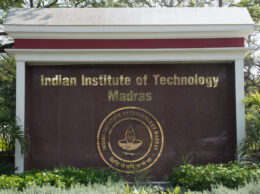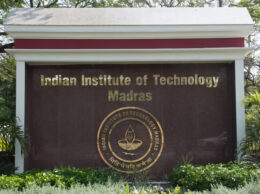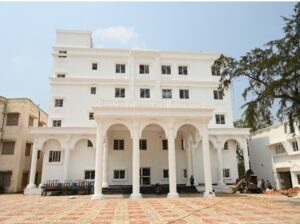Chennai, 11 June 2020: Indian Institute of Technology Madras (IIT Madras) has once again emerged as the undisputed leader in education in India, bagging the top honours in National Institutional Rankings Framework (NIRF) 2020 conducted by the Ministry of Human Resource Development, Government of India.
IIT Madras has been ranked No: 1 in India in both ‘Overall’ and ‘Engineering’ Categories in NIRF 2020. This is second consecutive year, IIT Madras has bagged the Top Rank in ‘Overall’ Category and No: 1 in ‘Engineering’ category for the fifth consecutive year. IIT Madras has also been identified as an ‘Institution of Eminence,’ by the Govt. of India.
The Results were announced today (11th June 2020) by Shri. Ramesh Pokhriyal ‘Nishank,’ Hon’ble Minister of Human Resource Development, Government of India, through an online session.
Speaking about the NIRF Ranking Results, Shri. Ramesh Pokhriyal ‘Nishank,’ Hon’ble Minister of Human Resource Development, Government of India, said, “IIT Madras retains the first rank followed by IISc, Bangalore. IIT Delhi has been ranked #3 in the Overall Category. I congratulate all the top three institutes and I also encourage all the other institutes who participated to continue their good work.”
Further, Shri. Ramesh Pokhriyal ‘Nishank’ said, “We will create an enabling situation when institutes from across the world will want to be la part of the Indian NIRF Rankings. Our ‘Study in India’ initiative is working to bring international students to India. This year, 3,800 Institutes participated in NIRF Rankings, which is 20% higher than last year. ”
The Institute also improved its performance in the ‘Management’ category of NIRF 2020. It has been ranked No: 14 nationally in ‘Management’ category this year, compared with its last year’s position of No: 15. IIT Madras offers select Postgraduate and Ph.D. programmes in Management through its Department of Management Studies.
Speaking about these remarkable achievements, Prof. Bhaskar Ramamurthi, Director, IIT Madras, said, “We are delighted to maintain our top position for the fifth time running and ever since the NIRF rankings were launched. This is the result of the excellent work of our faculty, students and staff, and we look forward to continue on the path of excellence in the coming years and make a mark nationally and internationally.”
IIT Madras has drawn up a Strategic Plan (https://www.iitm.ac.in/sites/default/files/uploads/strategicplan2020.pdf) and executed it to achieve rapid strides in various sub-parameters of NIRF Rankings such as Qualified and Experienced Faculty, Student-Faculty Ratio, Industrial Consultancy and Sponsored Research, Placement and Higher educational opportunities for its students, quality of research publications and so on.
This Strategic Plan spelt out quantified targets for all key pillars of the Institute. These include a flexible curriculum suited to the aspirations of today’s youth, significant increase in faculty strength, a thriving research programme reflected in rapidly increasing publication quality and count, India’s strongest industry-academia collaboration epitomized by the country’s first university-based Research Park, an effervescent start-up ecosystem with nearly a hundred companies being currently incubated, a rapidly expanding programme of collaborations and student exchanges with leading global universities, and an impressive Placement record.
IIT Madras has also created a strong entrepreneurial eco-system that encourages students to become job-generators. The IIT Madras Incubation Cell (IITMIC) is India’s leading Deep Technology Startup hub with Innovation and Impact as key differentiators/drivers. IITMIC houses IITM’s Rural Technology and Business Incubator, Bio- and MedTech incubators as well. Together they have incubated over 195 deep tech startups till date in sectors like Manufacturing, IoT, energy/renewables, healthcare/ medical devices, water, edu-tech/skill development, agri-tech, robotics, AI, ML, data analytics, AR/VR, and Enterprise.
Started in 2015, NIRF outlines a methodology to rank educational institutions across the country. The parameters used for ranking broadly cover “Teaching, Learning and Resources,” “Research and Professional Practices,” “Graduation Outcome,” “Outreach and Inclusivity,” and “Perception.”









